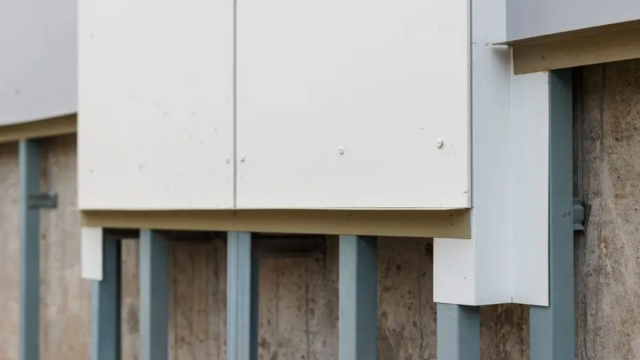Rainscreen systems have revolutionized the way we think about protecting and preserving the exterior of buildings. Essentially, a rainscreen is a protective layer affixed to the external wall of a building, designed to prevent rainwater from penetrating the wall assembly. It operates on a simple yet ingenious principle: by allowing water to penetrate the outer layer but then draining and evaporating it before it reaches the building’s interior.
Importance of Rainscreens: Protecting Building Envelopes
Contents
- Importance of Rainscreens: Protecting Building Envelopes
- Fundamentals of Rainscreen Technology
- Components of a Rainscreen System
- Types of Rainscreen Systems
- Materials Used in Rainscreen Construction
- Design Considerations for Rainscreen Systems
- Rainscreen Installation and Construction
- Maintenance and Durability of Rainscreen Systems
- Rainscreen Systems in Different Climates
- Regulatory and Building Code Considerations
- Case Studies: Successful Rainscreen Applications
- Future Trends in Rainscreen Technology
- Conclusion
The significance of rainscreens cannot be understated in modern construction. They offer a robust defense against moisture-related damage, such as mold, rot, and structural deterioration. More than just a moisture barrier, rainscreens also contribute to thermal efficiency and can dramatically enhance a building’s aesthetic appeal.
Fundamentals of Rainscreen Technology
Rainscreen technology is not a modern innovation; its origins trace back to centuries-old building practices. However, contemporary rainscreens are far more advanced, incorporating new materials and design philosophies to maximize efficiency and durability.
Components of a Rainscreen System
A typical rainscreen system comprises several key components:
- Outer Cladding Layer: This is the visible exterior layer, available in various materials, from metal to terra cotta. It’s designed to resist and channel water away from the building.
- Air Cavity Space: This gap between the cladding and the water-resistive barrier is crucial for allowing water to drain and air to circulate.
- Water-Resistive Barrier (WRB): This layer blocks water from reaching the building structure while allowing moisture vapor to escape.
- Support Framework and Attachments: These elements securely hold the entire system together, ensuring stability and durability.
Types of Rainscreen Systems
Rainscreens can be broadly categorized into two types:
- Drained and Back-Ventilated Rainscreens: These systems allow for both drainage and evaporation, making them highly effective in most climates.
- Pressure-Equalized Rainscreen Systems: These are more complex, designed to balance air pressure inside and outside the cavity to prevent water penetration.
Materials Used in Rainscreen Construction
The choice of material for the cladding can significantly impact the system’s performance and aesthetics. Metals like aluminum and zinc offer durability and modern appeal, while composite panels provide versatility and a range of finishes. Natural stone and terra cotta bring a timeless elegance, coupled with robust protection.
Design Considerations for Rainscreen Systems
Designing a rainscreen system involves balancing aesthetics, thermal performance, and moisture management. Architects must consider the visual impact of the cladding, ensure that the system contributes to the building’s energy efficiency, and optimize the airflow dynamics for effective moisture evaporation.
Rainscreen Installation and Construction
The installation process of a rainscreen is intricate and requires meticulous planning. Pre-installation involves assessing the building’s structure and designing a system tailored to its needs. The installation itself is a step-by-step process, often requiring specialized skills to navigate challenges such as uneven surfaces or complex building shapes.
Maintenance and Durability of Rainscreen Systems
Though rainscreens are designed for longevity and low maintenance, routine checks are essential. Regular inspections can identify and rectify any issues, such as blockages in the drainage paths or wear and tear on the cladding, ensuring the system remains effective and durable.
Rainscreen Systems in Different Climates
Rainscreen systems must be adapted to suit various climatic conditions. In wet and humid climates, they must efficiently manage high levels of rainfall and humidity, whereas in colder, drier climates, their thermal insulation properties become more significant.
Regulatory and Building Code Considerations
Compliance with local building codes and standards is a critical aspect of rainscreen system design and installation. Additionally, many rainscreen systems contribute to green building certifications, aligning with environmental sustainability goals.
Case Studies: Successful Rainscreen Applications
Examining real-world applications of rainscreen systems in both commercial and residential buildings can provide valuable insights into their versatility and effectiveness.
Future Trends in Rainscreen Technology
The future of rainscreen technology lies in the continuous innovation of materials and design approaches. Emphasis on sustainability and reducing environmental impact is driving the development of greener, more efficient systems.
Conclusion
In conclusion, rainscreen systems represent a significant advancement in building technology. They offer effective moisture management, enhance thermal efficiency, and contribute to the aesthetic appeal of buildings. As technology evolves, so will the capabilities and applications of rainscreen systems, reinforcing their essential role in modern architecture.


